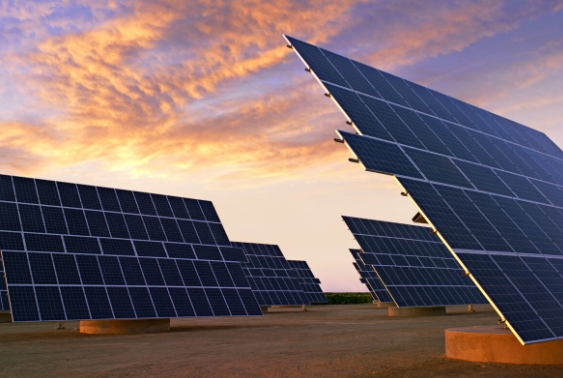
“Global demand for renewables has reached unprecedented levels, driven by country-level policy targets, technology innovation, and concerns over energy security,” said Luke Lewandowski. Image: REC Group.
The world will add 3.8TWac of new solar capacity by 2033, alongside 1.6TW of new wind capacity, as governments look to meet their decarbonisation goals.
These are the takeaways from a report published by analyst Wood Mackenzie earlier today, which expects the world’s cumulative global total of installed solar and wind capacity to reach 8TW by 2033. This equates to the addition of an average of 560GW of clean energy capacity each year from 2024 to 2033, an increase over the close to 450GW of new solar and wind capacity installed in 2023.
“Global demand for renewables has reached unprecedented levels, driven by country-level policy targets, technology innovation, and concerns over energy security,” said Luke Lewandowski, vice president of global renewables research at Wood Mackenzie, who drew attention to the vital role that solar is expected to play in this transition.
“Solar PV leads the deployment race, accounting for 59% of global capacity due to come online between 2024 and 2033,” said Lewandowski. “Energy storage will have the most balanced geographic footprint over the outlook due in part to its important role in helping to make renewable power available.”
Perhaps unsurprisingly, the Wood Mackenzie analysis expects Chinese installations to account for around half of the new solar capacity installed over the next ten years and for China’s continued commitment to solar installations to drive global year-on-year increases in annual capacity until 2026.
Other markets, such as the US, however, are also expected to increase their rate of capacity installation. The Wood Mackenzie analysis notes that, in the first quarter of this year, the US installed more new solar capacity than in the entirety of 2019, and figures from the US Energy Information Administration (EIA) show that in April, utility-scale solar alone accounted for a record 6.1% of the US’ total electricity generation.
Wood Mackenzie goes on to note that, from 2026, there will be a two-year decline in year-on-year capacity additions due to “an expected pause in development activity” before the rate of installations increases again.
As the rate of solar installations has continued to increase around the world, the global energy industry is facing a number of challenges as the world’s energy mix changes rapidly. Chief among these is a lack of grid availability across the world, including in key solar markets such as China and the US, with a report from DNV suggesting that the world’s annual spending on grids will need to more than double to US$970 billion by 2050.
Addressing infrastructure challenges such as these will be vital if the world is to meet these solar deployment forecasts as part of longer-term plans to meet energy transition targets.
The Wood Mackenzie research also noted that storage will become an increasingly important part of the global energy mix, with renewable power sources, such as solar, among the primary beneficiaries of an uptick in storage capacity installations. The analyst’s figures suggest that total cumulative energy storage capacity will reach 159GW/358GWh by the end of 2024, and the world will add 926GW/2.8TWh of new storage capacity by 2033, a massive increase of 636%.
“Global energy storage deployment in 2023 achieved record-breaking growth of 162% compared to 2022, installing 45GW/100GWh,” said Anna Darmani, principal analyst, energy storage, at Wood Mackenzie. “While impressive, the growth represents just the start for a multi-terawatt market as policy support in terms of tax exemption and capacity and hybrid auctions accelerate storage buildout across all regions.”
As is the case in the solar sector, there is considerable regional variation in the storage industry. China is expected to add an average of 42GW/120GWh of annual capacity over the next decade, while in Europe, demand for storage capacity in the distributed sector has fallen by 23% in 2024. However, Wood Mackenzie expects “lower system costs and regulatory changes,” as Darmani suggested, to drive an increase in distributed market growth from 2026.
(The above content is reproduced from pv-tech,By JP Casey)
Disclaimer: This website reproduces information from cooperative media, institutions or other websites. The publication of this article for the purpose of transmitting more information,and it does not imply endorsement of its views or confirmation of the authenticity of the content. All information on this website is for reference only and can’t be used as the basis for transactions or services. If there are any infringement or other issues in the content of this website, please notify it in time, then this website will be promptly modified or deleted. Anyone who logs in to this website in any way, or directly or indirectly uses the information on this website shall be deemed to have voluntarily accepted the binding of this website statement.